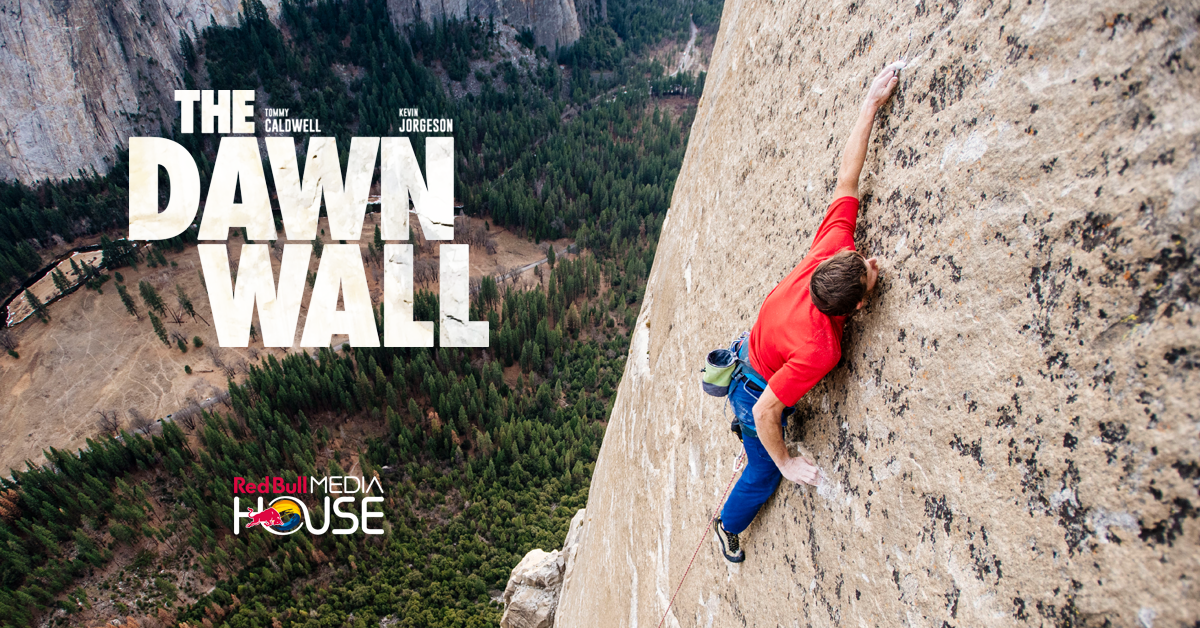
Finding a New Route
A Review of Dawn Wall
By: Bryn Clark
Film Summary
Imagine the side of a cinder-block building. The concrete is unforgiving and harsh. The wall is directly perpendicular to the ground and is so steep that you begin to wonder if maybe it’s leaning toward you. There’s no place to get a handhold, nowhere to grip. Trying to pull yourself up this wall by your fingers feels like trying to climb up a million cheese graters arranged perpendicularly. So, why would you try?
The person to ask this very question, turns out, is Tommy Caldwell, along with his climbing partner, Kevin Jorgeson. Together, they completed the first ascent of Dawn Wall in January of 2015. While El Capitan’s Dawn Wall is not a cinder-block building, it is renowned for being one of the most difficult (and previously-thought impossible) climbs in the world.¹
The story of Tommy Caldwell’s life is interwoven into the narrative of his historic ascent. Tommy was a delicate child, or so his parents believed. Because of this, his father had him in a climbing harness not long after he mastered walking (a milestone he achieved later than most children). Say what you will about rappelling a five-year-old over the side of a mountain, but this technique grew Caldwell into quite the athlete. From there, Caldwell went on to win a series of elite climbing competitions.
Almost overnight, the puny kid who had a father that worried about him being bullied became an accomplished climber with wide-renown. It was around this time that Tommy met Beth, whose climbing career was on a trajectory quite akin to Caldwell’s. The two fell in love and quickly became the climbing world’s first celebrity couple.
In August of 2000, Tommy, Beth and two other climbers journeyed to Kyrgyzstan for a sponsored climbing expedition. One morning in the mountains, they were awoken by bullets ricocheting off the rocks around them. The four were taken captive by radical militants; they’d been literally caught in the crossfire of an Islamic feud. After being held in captivity for six dreadful days, they escaped. But to escape, Caldwell had no other option than to push one of their captors over a cliff. And act which, once done, left Tommy crumpled and weeping on the edge of the mountain path. That moment came to define Tommy for many years.²³
Their escape from radical Islamist militants captured international media attention. Then, in a pre-9/11 world, Western tourists being held hostage in a religiously-based conflict was unimaginable.4 The media hype eventually died down, and the team moved on with their lives. Later, Tommy and Beth were married. It was only several years after that some Tommy noticed some “cracks” in the rock of their marriage. A relationship that had been forged through the fires of great trial started to disseminate. One day, during this time, Tommy was using a table saw to cut a two-by-four for some renovations to their home. He slipped and his pointer finger got caught on the saw blade. Despite multiple attempted surgeries, Tommy’s finger was never reattached. Most of the people—including several accomplished climbers—in his life, assumed this was the end of his career. Remarkably, it wasn’t. But his marriage ended soon thereafter.
By this point in his life, Caldwell’s name was already forged into the record books of climbing. He had completed multiple first ascents, many of them on Yosemite’s El Capitan. He even went so far as to do some of these arduous climbs back-to-back in a single day, a feat akin to crawling a marathon—then doing it again.
But there was one climb neither Caldwell— nor anyone else— had completed. The most formidable climbing face, Dawn Wall—named as such because it was the first to be kissed by the morning sun each day. It is this climb that, in the wake of trauma and heartbreak, Caldwell committed himself to wholeheartedly.
Film Review
Dawn Wall is well-filmed. The films producers, Peter Mortimer and Josh Lowell, have worked together on climbing films for over ten years, and it shows. The scenes unfold naturally and without any apparent rehearsal. Shots range from articulate and sharp to vast panoramas. It’s a beautiful film; it’s capturing of Yosemite alone is worthy of viewing. The soundtrack is diverse and adds subtle notes of emotion throughout the story.
Though not highlighted, there are several things to be learned from Dawn Wall, for climbers and non-climbers alike. Dawn Wall shows us that healing might mean going back to the source of our problems; Tommy returned to climbing, where his journey began, to deal with where his journey had led him. Sometimes we have to return to the beginning of our story to heal from our past.
Dawn Wall is also a reminder of the transforming effects of being outside and active. Granted, not all of us can climb anywhere close to Caldwell’s level, but his story still serves to reinforce the fact that getting outside and being active can help lift one out of depression and pain (emotional and physical).5 It reminds us that there is beauty beyond —or in spite of— our own story. Few things can remind us of grace as poignantly as the sun kissing a mountain before morning’s first breath. And Dawn Wall reminds us that getting outside can help us get outside of our problems and ourselves.
I was asked for an opinion on this film after sharing my thoughts on Alex Honnold’s Free Solo. The films are similar in scope and superficial beauty. Compared to Honnold, Tommy Caldwell is a more likeable protagonist. Honnold has been accused of being driven by an ego (as opposed to the rest of us?). Dawn Wall doesn’t give the impression that Caldwell’s ego is a driving force. One gets the sense that there is a deeper, more profound push behind Caldwell’s endeavor. The unfortunate thing is, however, the film doesn’t give us much more than that either.
Dawn Wall focuses on climbing with all else in the periphery. One can’t fault a film for remaining in its genre. But great films press against the conventional boundaries of a genre. Dawn Wall is a good movie, but not a great one and it leaves some of the more powerful parts of the story behind. Dawn Wall captures a journey of multiple themes: pain, terror, depression, marriage, perseverance, violence and forgiveness. Though present, these themes—nor the events surrounding them— don’t get much air time. Again, not a criminal offense, but definitely a missed opportunity.
The driving question that opened this article (Why climb Dawn Wall?) hangs over the entire film. Caldwell had a lot of reasons to spend years trying to scale this particular geological phenomenon. Though viewers are elated and perhaps leap with joy alongside Kevin and Tommy when they finally reach the summit, we’re left without any kind of deeper joy— a depth of joy which, I’m sure, Caldwell felt. Perhaps this is the part of me that enjoys flirting with the edge of an existentialistic crisis all the time, but I was hoping for something a bit more out of this film: more of Caldwell, more of his pain, depression, hope and redemption.
This portrait of Caldwell’s accomplishment is like a puzzle that’s completed, save for several large and pertinent pieces. Dawn Wall is beautiful, but a lot was left out. Again, that’s a lot to ask for from a climbing film. But great films, like great climbers, can always set new routes.
¹Earlier this year, Dawn Wall was successfully free-climbed by a young Czechian prodigy named, Compared to Caldwell and Jorgeson’s 19-day expedition, he completed the climb in 8.
²https://www.outsideonline.com/1928676/fear-falling
³It was rumored that the militant Tommy pushed actually survived the fall. Though there’s little documented evidence to prove this, Caldwell did learn of it several years later.
4 Though, sadly, it would not be the last time climbers and adventurers would find themselves caught in the cross-hairs of jihadist revolutions. Relative to many incidents in the year’s following Caldwell’s internment, Tommy and his team got off lucky.
5 https://www.nytimes.com/2019/02/20/health/teenage-depression-statistics.html
